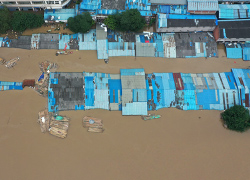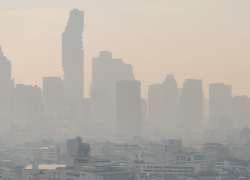

Advancing Air Quality, Food Security and
Human Health under Global Climate Change
Human Health under Global Climate Change
- Atmospheric Circulations Associated With Extreme Precipitation Over the Yangtze River Valley During the 2020 Meiyu Season
- How Intense Will Future Tropical Cyclone Impacts Become Due to Global Warming?
- Sustainable Farming Practices as a Means to Resolve the Worsening Food Crisis and Air Pollution Problem
- Harnessing Nature-based Solutions for Ameliorating the Impact of Global Environmental Change
- Transboundary Air Pollution and Health Impacts
- Adverse Effects of Environmental Contaminants on Human Health
|
Home / Project Highlights / Ecosystem Health / Harnessing Nature-based Solutions for Ameliorating the Impact of Global Environmental Change
|
|
Harnessing Nature-based Solutions for Ameliorating the Impact of Global Environmental Change
|
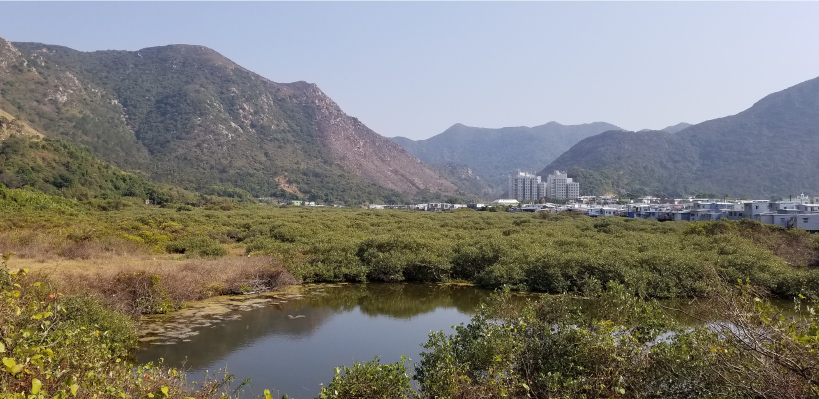
|
Even small coastal wetlands may contribute significantly to the reduction of the local pollution and carbon emission impacts, such as this brackish water marsh – mangrove forest at Tai O, Hong Kong. Photo credit: Professor Joe Shing-yip LEE |
|
The long-term sustainability of human society is increasingly threatened by a myriad of unprecedented environmental changes, ranging from intense coastal urbanization, to the climate crisis, loss of biodiversity and ubiquitous pollution. While reliance on hard engineering solutions has been the common strategy to tackle these challenges, this may compromise the long-term sustainability of the environmental fabric on which our survival depends. For example, the construction of concrete seawalls may protect coastal communities from attack by rising sea level and intensifying cyclones and storm surges, but this also reduces accommodation space that is critical to the continual survival of coastal wetlands in the face of sea level rise. Our work on the functions and services of coastal wetland ecosystems – such as mangroves, salt marsh and tidal flats – attempts to evaluate the contribution of these systems to ameliorate the negative impacts of global environmental change. In particular, we assess the value of these nature-based solutions in tackling global warming due to increasing carbon dioxide emission. We investigate how mangrove and tidal flat ecosystems sequester, assimilate and store carbon. Our findings may help existing habitats better managed, damaged systems better restored and created forests better designed, in turn enhancing their capacity for reducing anthropogenic carbon dioxide emissions. Another active area of our work is the role of key organisms in coastal wetland function and their capacity for major ecosystem services. Our recent work has contributed significantly to the harness of “Blue Carbon” as a nature-based solution for mitigating the harmful effects of global climate change. |
|
Recent relevant publications:
|
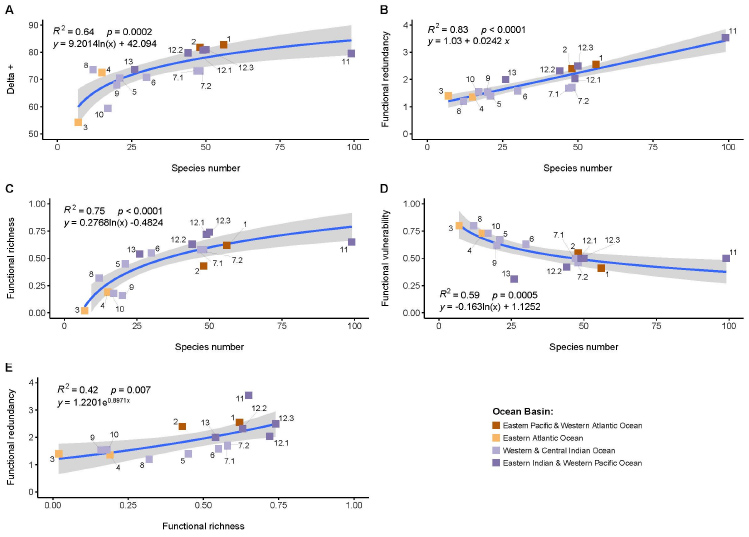
| Relationship between the number of species of key invertebrates and their functional diversity and redundancy in 16 mangrove ecosystems across the globe. Most ecosystems are characterized by very low functional redundancies, i.e. the loss of each species may result in significant reduction of ecosystem function. (from Cannicci et al. 2021. Proc. Natl Acad. Sci. USA) |
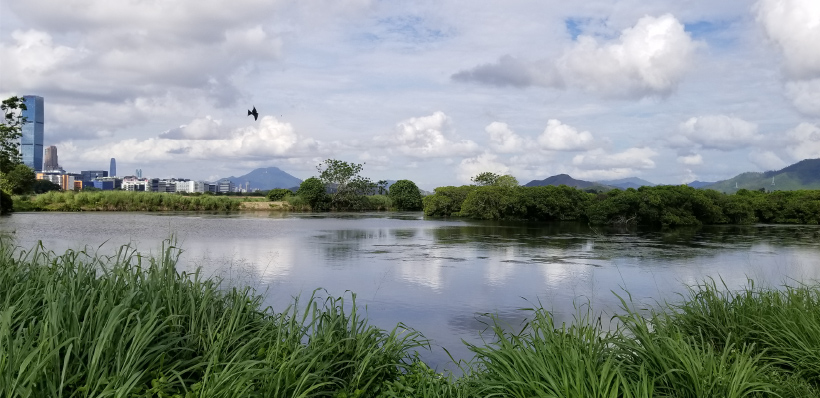
|
Nature-based solutions – such as restored or created coastal wetlands – help offset the anthropogenic environmental change caused by intense urbanization. The Mai Po Marshes (with Shenzhen megacity in the background) offers many important ecosystem services to the Pearl River estuary, which is part of the Greater Bay Area and the largest megalopolis in the world.
Photo credit: Professor Joe Shing-yip LEE |
| Acknowledgement: This section of research project was supported by grant from the Vice-Chancellor’s Discretionary Fund of The Chinese University of Hong Kong (project no.: 4930744). |


